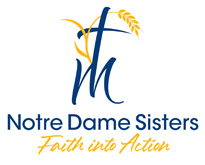Notre Dame
Academy History
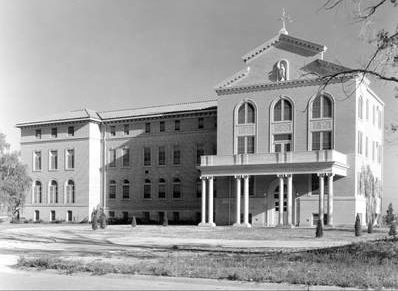 Notre Dame Academy opened its doors in 1926 under the leadership of Sr. Mary Qualbertina Vanek. The all-girls school opened with 15 students, and by the end of the first academic year, attendance had grown to 26 students from around the Midwest.
Notre Dame Academy opened its doors in 1926 under the leadership of Sr. Mary Qualbertina Vanek. The all-girls school opened with 15 students, and by the end of the first academic year, attendance had grown to 26 students from around the Midwest.
The Academy was sponsored and staffed by the Notre Dame Sisters from its inception to its merger with Rummel High School in 1974. With this merger, Roncalli Catholic High School was formed, and continues to carry out the Notre Dame Academy’s legacy today.
 The Notre Dame Sisters educated thousands of young women throughout the Academy’s 48 years, while additionally providing a comprehensive experience in faith, civic responsibility and community living. Even back in the 1920’s the Notre Dame Sisters embraced the importance of a well-rounded education, offering numerous classes in a variety of arts and music, along with the core courses provided to the young women. Our Alumnae grew to become teachers, nurses, mothers, doctors, members of religious communities, lawyers, accountants, community volunteers and many more very worthwhile professions throughout the Omaha community and beyond. While our Alumnae are now spread throughout the United States and abroad, we still join together at least once each year to celebrate the many lessons and memories shared from experiences at Notre Dame Academy.
The Notre Dame Sisters educated thousands of young women throughout the Academy’s 48 years, while additionally providing a comprehensive experience in faith, civic responsibility and community living. Even back in the 1920’s the Notre Dame Sisters embraced the importance of a well-rounded education, offering numerous classes in a variety of arts and music, along with the core courses provided to the young women. Our Alumnae grew to become teachers, nurses, mothers, doctors, members of religious communities, lawyers, accountants, community volunteers and many more very worthwhile professions throughout the Omaha community and beyond. While our Alumnae are now spread throughout the United States and abroad, we still join together at least once each year to celebrate the many lessons and memories shared from experiences at Notre Dame Academy.
After careful evaluation and prayer regarding the current and future circumstances surrounding the Notre Dame Sisters, their Motherhouse and their Academy, it was decided in 1997 to continue pursuing the Notre Dame Sisters’ mission of meeting unmet needs in the community, and convert the Academy into safe, affordable housing for seniors, now Notre Dame Housing.
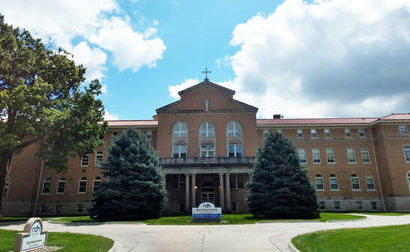
Notre Dame Academy Today
Today 77 units are housed within the old Notre Dame Academy, with some of the original woodwork, light fixtures and embellishments still intact. December 2011 marked the addition of 30 more units, bringing our total to 105 units of safe, affordable housing for seniors in Florence. While classes are not still in session at the Academy, the spirit that the Notre Dame Sisters worked to instill in their students is still alive and well.
For a more detailed history of the Notre Dame Academy, to take a tour of the building, or further information about the Notre Dame Sisters’ mission, please contact the Advancement Office.
CONTACT US TODAY
1924 HISTORY OF HOW THE ND SISTERS CAME TO AMERICA
This small article is part of a larger history of the Notre Dame Sisters written by Sr. M. Qualbertina Vanek de N.D., in 1924.
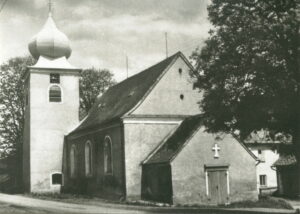 Turn-of-the-centry, Europe
Turn-of-the-centry, Europe
Owing to the profound humility and zeal of the Sisters, together with the indefatigable labors of their Rev. Founder, God showered His choicest blessings upon this Congregation.
In a comparatively short time, the Bohemian Notre Dame Sisters developed their activities to such an extent, that, in every line of educational work their quiet, but subduing influence resulted in great accomplishments in the 110 missions in Bohemia, Moravia, and Slovakia, where they take care of the little innocent children in the Day Nurseries, and educate them in Kindergartens, Orphanages, Institutions for Deaf Mutes, and instruct the budding youth both in Public and Parochial Grade and High Schools. They also conduct three of their own Normal Schools, many Academies, Vocational Schools, and others.
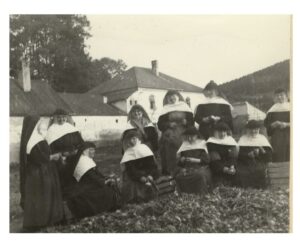 No time to move to America
No time to move to America
No wonder, then, that there was no surplus of Sisters to be sent to America, when in 1909 the Right Rev. Thomas Bonacum, the late bishop of Lincoln, Nebr., visited the motherhouse in Horazdovice, Czechoslovakia, in order to obtain Sisters for the Bohemian parishes of his diocese. His wish, however, could not be gratified.
Shortly after his return to his bishopric God called him to enjoy the well-merited eternal bliss. There, at the throne of God he must needs have pleaded the cause, for only one year later Rev. C. A. Bleha of St. Louis, Mo. went to Czechoslovakia on the same mission, and was promised the Sisters without delay.
Five Sisters, headed by Venerable Mother M. Qualberta, the Commissary, increased their merits by one great sacrifice, namely that of leaving their own beloved native land.
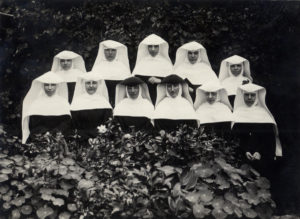 Arrival in Missouri
Arrival in Missouri
Having arrived at the American shores May 10, 1910, they set out for St. Louis, interview with Rev. C.A. Bleha, who conscientiously continued the work of the late Monsignor Joseph Hessoun, who is honored for the missionary work all over the States by all nationalities in general, and by the Bohemians in particular. He was the founder of the first Bohemian Catholic parish in America, and the excellent Bohemian Catholic semi-weekly “the Hlas” owes its origin to his honest endeavors. For these invaluable services the Bohemians erected a modern Institution, named the Hessoun Orphan Home at Fenton, Mo., as a memorial to their beloved Monsignor.
The management of this particular place and the education of the orphans was to be entrusted to the care of these Sisters, whom the Bohemian people of St. Louis gave, as it were, a royal reception.
History
-
The first letter of Mother Qualberta Krivanec, 1910
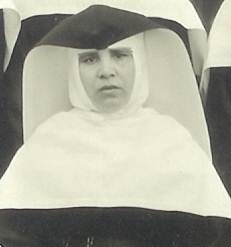 The first letter of Mother Qualberta Krivanec, written in New York, May 10, 1910
The first letter of Mother Qualberta Krivanec, written in New York, May 10, 1910Thanks be to God, we are already resting calmly. The liner (Grosser Kurfurst) anchored at shore about noontime.
That was preceded by a medical examination. We observed the other passengers, especially those from between decks. They were treated quite harshly in order that the work could be expedited. Only our eyes were examined. Then they summoned us and few others who were ahead of us into the dining room from where they permitted us to pass through without further delay.
The inspection of our baggage could not have gone better. Willingly we opened everything: suitcases, handbags and parcels. The inspector came to us personally. In about three trunks he lifted the top items. He asked us to open one box, and what was in it? A profession wreath!! He inquired about the things in the other trunks and crates; then he asked us to close all of them. He then filled out and attached to each one a card stating that they had been inspected. He did not even touch the smaller boxes and most of the trunks were not opened. . . .Then we met our Captain. He thanked for yesterday’s written thank you and congratulated us….No one asked us about money, whether we have some balance, only what is our destination and if we have our ticket paid.
A jubilant member of the St. Raphael Society hurried up the ship with the telegram from Fr. Bleha (pastor of St. John Nepomuk Church in Fenton, Missouri). The gentlemen tried to stop him from approaching us upon which he ripped open his coat and showed a golden anchor with a cross. He provided everything for us. . . . When we attempted to help them tie the ropes on our trunks, the customs official prevented us with a gentle gesture that such work is not for us. We could hardly comprehend his consideration and willingness. In parting he said smilingly, “Pray for us sinners.”
All of us were extremely hungry. What a great delight it was to learn that we are with a genuine Czech family, where they laid before us a Czech meal and good beer! We were served noodle soup, beef with gravy, dumplings, an omelet made with cottage cheese, and good bread. Later we were joined by an 82-year old mother and her two daughters. One of them attends a local school where the Sisters teach Czech, and who supposedly wear a habit like ours. Already before we entered the house both of the girls embraced us and cuddled up to us.
Our bedroom is furnished with five beds, a table, one common wash stand built like a fireplace, adjoining the bathroom with a tub and other necessities.
Today we are completely healthy and contented. The sight of the American shoreline and then of the homes, gardens, ships and other places exhilarated us beyond bounds; we hardly felt any fatigue. For now, goodnight! God willing, tomorrow we will write again. MG
-
The Humility of Mother Qualberta
 March marks the 83rd anniversary of Mother Qualberta Krivanec’s death. Today is a great time to reflect on some of Mother’s outstanding qualities.
March marks the 83rd anniversary of Mother Qualberta Krivanec’s death. Today is a great time to reflect on some of Mother’s outstanding qualities.HUMILITY
HUMILITY was another noticeable trait. Although Mother tried to practice all Christian virtues, she placed an emphasis on humility. She was considerate and understanding of others’ faults, but strict with herself. She allowed herself no comforts, refused extras in food when ill, and did her work in a spirit of prayer, often stopping in the chapel to visit the Blessed Sacrament.
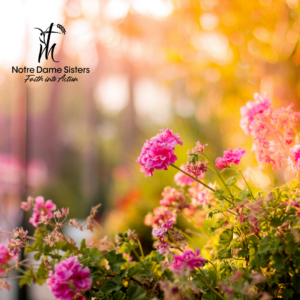
-
The Humor of our Mother Qualberta
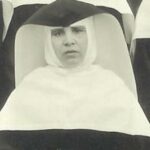 March was the 83rd anniversary of Mother Qualberta Krivanec’s death. Let us reflect on some of Mother’s outstanding qualities. We published one of her qualities in a blog each week. Click here for previous blogs.
March was the 83rd anniversary of Mother Qualberta Krivanec’s death. Let us reflect on some of Mother’s outstanding qualities. We published one of her qualities in a blog each week. Click here for previous blogs.SENSE OF HUMOR
Mother had a SENSE OF HUMOR. During the cold winter mornings when the candidates said their prayers, they placed their feet in the oven of the cook stove and their hands over the tea kettle to keep warm. One candidate put her shoes in the oven, but forgot to retrieve them. Mother found them, removed and hid them, but returned them at Christmas with an original humorous poem pinned to the wrapping.
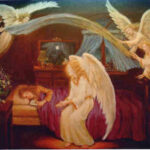 Another example of HUMOR occurred when the candidates asked Mother why one candidate was packing her clothes. Mother explained, “The girl was a little too holy for us. She had angels sitting on the four corner posts of her bed and singing to her at night. I know that most of you have a devil sitting around all the sides. I think we can work with you!”
Another example of HUMOR occurred when the candidates asked Mother why one candidate was packing her clothes. Mother explained, “The girl was a little too holy for us. She had angels sitting on the four corner posts of her bed and singing to her at night. I know that most of you have a devil sitting around all the sides. I think we can work with you!” -
Qualities Of Mother Qualberta Krivanec
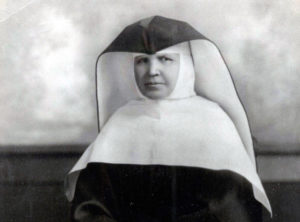 March 3, 2022 marks the 83rd anniversary of Mother Qualberta Krivanec’s death. It might be of interest to reflect on some of Mother’s outstanding qualities. We will publish another one of her qualities in a blog each week this month.
March 3, 2022 marks the 83rd anniversary of Mother Qualberta Krivanec’s death. It might be of interest to reflect on some of Mother’s outstanding qualities. We will publish another one of her qualities in a blog each week this month.FAITH and TRUST
The missionary venture to America with four other Notre Dame Sisters put Mother Qualberta’s STRONG FAITH and TRUST in the Providence of God to a test. A new life in the New World was difficult because of the climate, language, culture and work in an orphanage. Furthermore, America was a great distance from Horazdovice, and there were no Czech priests to celebrate Mass or to hear confessions. With no one in whom to confide her troubles, Mother placed her confidence in God and encouraged the Sisters that there were souls to be saved.
Her FAITH led her to trust God. While living in Cedar Rapids, lowa, Mother and Sister Ludmila planned to go to town, but missed the street car. Mother suggested that they walk fast and catch the car at the next stop because it had to make a loop. Sister Ludmila doubted they’d make it! Mother replied, “You doubting Thomas! St. Joseph will see to it!” He did! The Sisters had to wait at the next stop for the street car!
DEVOTION TO THE SACRED HEART
 DEVOTION TO THE SACRED HEART OF JESUS AND TO THE BLESSED VIRGIN MARY was special to Mother. She often confided her personal doubts and problems to the Sacred Heart She fostered devotion among the Sisters by gathering them around the Sacred Heart statue on the First Friday of each month to pray and to sing a hymn.
DEVOTION TO THE SACRED HEART OF JESUS AND TO THE BLESSED VIRGIN MARY was special to Mother. She often confided her personal doubts and problems to the Sacred Heart She fostered devotion among the Sisters by gathering them around the Sacred Heart statue on the First Friday of each month to pray and to sing a hymn. Mother often picked flowers while on a walk outdoors and brought them to the altar of Mary. She relied on the Blessed Mother because she was very aware of her own need for assistance. She encouraged the teaching Sisters to “hold Christ and His Mother as their model teachers, as they strive for patience, kindness, understanding, and the ability to see the image of God in each child.”
-
Gabriel Schneider died February 14, 1867. He was a priest, Father, Mother, founder, but most of all a SAINT.
 Gabriel Schneider was born in Krems, Bohemia on March 21, 1812 to Matthew Schneider and Rose nee Zimmerman. He was baptized the same day and named Gabriel. From ages 6 to 12 he attended the village school, after which he was “exchanged” for one year into a German miller’s family to learn the German language.
Gabriel Schneider was born in Krems, Bohemia on March 21, 1812 to Matthew Schneider and Rose nee Zimmerman. He was baptized the same day and named Gabriel. From ages 6 to 12 he attended the village school, after which he was “exchanged” for one year into a German miller’s family to learn the German language.Too weak to physically engage in any trade, Gabriel begged to continue his philosophical studies in preparation for the priesthood at Bohemian Budweis. On July 25, 1837 he was ordained. His first assignment was as second assistant to the pastor at Klenci. He organized a “living rosary” and spread devotion to his patron St. John Nepomucene. In 1838 Rev. Schneider was transferred to Mrakov where he organized the women, girls and boys into groups for guidance.
Hirschau
In 1842, after a transfer to Hirschau, Father organized a Girls’ Sodality as a way to prepare girls to be well-trained women.
Father had a dream of the Blessed Mother leading girls to him. That gave him the impetus to organize a school for the education of girls. After two wealthy maids, Margaret Grall and Barbara Seidl volunteered to work for him, he began to build a parochial convent school in Hirschau. He sent the two women to be trained by the School Sisters of St. Francis in Gratz, Stiermark.
On May 15, 1847 Margaret Grall and Barbara Seidl received the religious habit and the names Joanna Nepomucene and Magdalene, respectively. Sr. Joanna became seriously ill and died after making her profession of vows. In 1848 Sr. Magdalene Seidl and four candidates returned to Hirschau, and in October the school officially opened.
Notre Dame Sisters
In 1849 Father petitioned the Notre Dame Sisters in Munich to take over the school. Mother Teresa Gerhardinger visited the school and suggested that it be a day school before developing into a boarding school. She also requested that the candidates be sent to Munich for further training.
In 1851, due to the problems Mother Teresa had in negotiations with Rome over the approval of their Holy Rule, she had little time or interest to give to the mission activities of the Sisters in Hirschau. Consequently, the Bishop of Budweis counseled Father Schneider to found an independent congregation of Sisters. After intense prayer, Father Schneider traveled to the Munich Motherhouse to bring home his two novices, Sr. M. Remigia and Sr. M. Armella and the six candidates.
When attempts to acquire other religious orders to take over the school in Hirschau failed, Father Schneider realized it was the will of God to found a new congregation. He began to write the constitution for this new venture.
August 15, 1853 marked the beginning of the Congregation of the Poor School Sisters de Notre Dame, with the first profession of the two novices and the reception of the six candidates. Sr. M. Remigia was appointed superior and Sr. M. Armella s novice mistress.
Horazdovice
In 1854, since Hirschau became too small for the growing congregation, Father bought a deserted 13-century monastery in Horazdovice. On October 29, 1854, the first reception and profession in the new General Motherhouse was held. Six novices were professed, six candidates invested with the habit, and Sr. M. Teresa Franz was elected General Superior.
Prague
Realizing the need for further education of the Sisters, Father Gabriel established a house in Prague in 1857 which he converted into a convent and normal school, calling it St. Ann’s.
The Archbishop of Kalocsa, Hungary, wanting School Sisters for his diocese, sent five Hungarian girls to Horazdovice as candidates. When invested, they accompanied Mother Teresa and couple Notre Dame Sisters to Kalocsa. Mother Teresa was so impressed with the huge, completely equipped building at the disposal of the Sisters, that she tried to persuade Father Schneider to make the General Motherhouse in Hungary. When Father refused, she completely broke away from the Congregation.
Superior General
Bishop Valerian Jirsik appointed Father Gabriel as Superior General until 1864 when a General Chapter could be held canonically for the election of a Superior General. The twelve members elected Sr. M. Jane Nepomucene who had been vested with the habit in Hirschau in 1853.
Father Gabriel moved to Ann’s in Prague where he worked to make St. Ann’s College an accredited school.
All of Father Schneider’s activities during his life were accompanied by chronic physical ailments. Despite many troubles, heavy debts, illnesses of the Sisters, dowries promised and not paid, and other problems, Rev. Gabriel remained amiable and solicitous for the welfare of the congregation. He became seriously ill in December 1866, but lingered on, suffering more each day, until his death at an early hour on February 14, 1867. He passed to an eternal reward as a priest, a Father, a Mother, a founder, but most of all a SAINT.
Sources: Biographical sketches in the archival file of Father Gabriel Schneider.
-
History of the Sisters in Omaha Magazine
The Community of Notre Dame Sisters dates back to the 16th century. It was founded in Lorraine, France in 1597 by St. Peter Fourier and Blessed Alix LeClerc.
You can read more about our long history on our historic timeline or on our narrative history.
We are blessed that the Omaha Magazine interviewed Sisters and Associates recently and wrote an incredible history article.
Read article here

-
1924 History of how the ND Sisters came to America
This small article is part of a larger history of the Notre Dame Sisters written by Sr. M. Qualbertina Vanek de N.D., in 1924. More of her history will be shared on our website.
Turn-of-the-centry, Europe
Owing to the profound humility and zeal of the Sisters, together with the indefatigable labors of their Rev. Founder, God showered His choicest blessings upon this Congregation.
In a comparatively short time, the Bohemian Notre Dame Sisters developed their activities to such an extent, that, in every line of educational work their quiet, but subduing influence resulted in great accomplishments in the 110 missions in Bohemia, Moravia, and Slovakia, where they take care of the little innocent children in the Day Nurseries, and educate them in Kindergartens, Orphanages, Institutions for Deaf Mutes, and instruct the budding youth both in Public and Parochial Grade and High Schools. They also conduct three of their own Normal Schools, many Academies, Vocational Schools, and others.
No time to move to America
No wonder, then, that there was no surplus of Sisters to be sent to America, when in 1909 the Right Rev. Thomas Bonacum, the late bishop of Lincoln, Nebr., visited the motherhouse in Horazdovice, Czechoslovakia, in order to obtain Sisters for the Bohemian parishes of his diocese. His wish, however, could not be gratified.
Shortly after his return to his bishopric God called him to enjoy the well-merited eternal bliss. There, at the throne of God he must needs have pleaded the cause, for only one year later Rev. C. A. Bleha of St. Louis, Mo. went to Czechoslovakia on the same mission, and was promised the Sisters without delay.
Five Sisters, headed by Venerable Mother M. Qualberta, the Commissary, increased their merits by one great sacrifice, namely that of leaving their own beloved native land.
Arrival in Missouri
Having arrived at the American shores May 10, 1910, they set out for St. Louis, interview with Rev. C.A. Bleha, who conscientiously continued the work of the late Monsignor Joseph Hessoun, who is honored for the missionary work all over the States by all nationalities in general, and by the Bohemians in particular. He was the founder of the first Bohemian Catholic parish in America, and the excellent Bohemian Catholic semi-weekly “the Hlas” owes its origin to his honest endeavors. For these invaluable services the Bohemians erected a modern Institution, named the Hessoun Orphan Home at Fenton, Mo., as a memorial to their beloved Monsignor.
The management of this particular place and the education of the orphans was to be entrusted to the care of these Sisters, whom the Bohemian people of St. Louis gave, as it were, a royal reception.

-
Father Flanagan's first boy's home needs sisters!
Father Edward Flanagan began to care for five homeless boys in December 1917 when he opened a Dodge Street home for them. Finding someone to take a mother’s place posed a problem. Father Flanagan turned to Father John S. Broz who was the spiritual director of the Notre Dame Sisters. Father Broz wired Sister Qualberta Krivanec in Cedar Rapids, lowa of the request for two Sisters for Boys’ Home. Sister Qualberta traveled to Schuyler, Nebraska to consult with her assistant Sr. Symphorosa Neuner, who became very enthusiastic about the offer. Later, another assistant, Sr. Gustava Melmer also gave her consent.
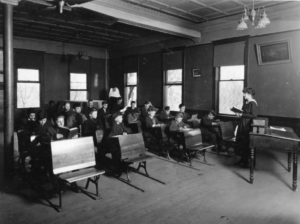 Despite the lack of Sisters, two were sent to Boys’ Home on December 11, 1917: Sister Rose Slevin who spoke only English, and Sister Martha Djobek who spoke only Slovak. They made up for the language problem through their loving care of the boys. Ludmila Kucera, an aspirant, was the third member of the group assigned to Boys’ Home.
Despite the lack of Sisters, two were sent to Boys’ Home on December 11, 1917: Sister Rose Slevin who spoke only English, and Sister Martha Djobek who spoke only Slovak. They made up for the language problem through their loving care of the boys. Ludmila Kucera, an aspirant, was the third member of the group assigned to Boys’ Home.As the Dodge Street Home became too small for the increasing number of boys, Father Flanagan acquired the German Home on South 13th Street. Then, on September 10, 1919, Father purchased Seven Oaks Farm in Florence. However, he sold it to the Notre Dame Sisters in 1920 when he deemed the property was not conducive to his expansion plans. He purchased Overlook Farm, ten miles west of Omaha, in 1921.
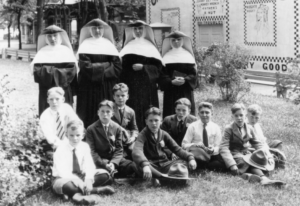 Moving to the new location was difficult for the Sisters, but they cheerfully worked hard amidst the suffering. There was no water in the house and no sidewalks outside; plowed earth stuck to the shoes and mud was carried throughout the building.
Moving to the new location was difficult for the Sisters, but they cheerfully worked hard amidst the suffering. There was no water in the house and no sidewalks outside; plowed earth stuck to the shoes and mud was carried throughout the building.At first the boys went to nearby schools, but because of irregular attendance or because of misdemeanors, the Juvenile Court recommended that Father Flanagan provide a school for them. Sisters Rose and Gustava Melmer and a lay teacher taught the boys.
Boys kept coming. In 1922 alone one hundred boys were stationed at Overlook Farm.
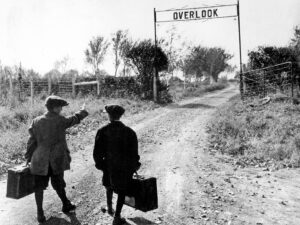 The domestic part of Boys’ Home was the charge of the Notre Dame Sisters. They were most enthusiastic about the success and comfort of the boys. Sr. Martha cooked good, wholesome and substantial food. The Sisters made certain the boys had shoes and clean clothing, repairing the old clothes or replacing them with new. Sr. Cyrilla Hudek was in charge of the washing and ironing. The Sisters supervised the sleeping quarters so they were clean and sanitary. The boys, as a result, were content, happy, and often expressed their appreciation.
The domestic part of Boys’ Home was the charge of the Notre Dame Sisters. They were most enthusiastic about the success and comfort of the boys. Sr. Martha cooked good, wholesome and substantial food. The Sisters made certain the boys had shoes and clean clothing, repairing the old clothes or replacing them with new. Sr. Cyrilla Hudek was in charge of the washing and ironing. The Sisters supervised the sleeping quarters so they were clean and sanitary. The boys, as a result, were content, happy, and often expressed their appreciation.The motherly concern for the boys was shown the morning little Allen complained of his stomach. As Sr. Rose stroked his hair, she asked what he would like for breakfast. He remarked he’d not be able to eat anything, “but—I wish I had an orange, some cookies, peanuts, candy….” Sr. Rose smiled; the other boys laughed, but Sister sent him some of the delicacies he requested.
When the Spanish influenza raged through Omaha, twenty boys took sick. Through the medical treatment of Dr. J. P. Dwyer and the self-sacrificing efforts of Sr. Rose, the boys recovered. Sr. Martha made sure the boys had nourishing meals.
Father Flanagan’s Boys’ Home Journal, published during the early years, had these comments:
“…dear Sister Alena, …I suppose you think that I forgot all about you, . .. I shall never forget… your motherly care for us.:” December 1918
“Sr. Rose is the angel of unceasing labors and untiring devotion to the cause of training and protecting our poor boys whom fate has thrown into her hands.” October 1919
“Many a visitor at the Home would give a nickel to one of the lads who … will run all over the house in search of Sr. Alexia to give her his easily acquired money for the flowers in the chapel.” March 1921
“Worth Winans very successfully passed the 8th grade examinations …, but wonders whether Sr. M. Emanuella, his untiring teacher, will agree with him on his “worth.” June 1921
“Our violin class now consists of twelve boys …. All of the boys enjoyed the music furnished by the violin orchestra. Credit must be given to Sr. M. Regina who has taught these young violinists.” December 1922
When the number of boys increased from ninety to 190 and the Notre Dame Congregation was unable to provide additional teachers, Mother Qualberta Krivanec suggested to Father Flanagan that he seek workers from another religious order. In a letter dated January 19, 1923, Father announced he had acquired the services of the Sisters of Mercy. The Notre Dame Sisters who dearly loved the abandoned boys and had sacrificed themselves for their good, painfully made their departure on January 24, 1923.
The following is a list of the Notre Dame Sisters who served at Boys’ Home:
- 1917-1918: Sr. Rose Slevin, Sr. Martha Djobek, and aspirant Ludmila Kucera
- 1918-1919: Sr. Rose Slevin, Sr. Martha Djobek, Sr. Alena Sedivy, Sr. Gustava Melmer, and novices Sr. Clementine Hlavik, Sr. Cyrilla Hudek, Sr. Rita Kucera
- 1919-1920: Sr. Ludmila Panek, Sr. Rose Slevin, Sr. Boniface Brecka, Sr. Martha Djobek
- 1920-1921: Sr. Qualbertina Vanek, Sr. Rose Slevin, Sr. Ludmila Panek, Sr. Alexia Hobza, Sr. Emanuela Karnik, Sr. Boniface Brecka, Sr. Josepha Varmuza, Sr. Martha Djobek, Sr. Oswalda Novacek, Sr. Methodia Saba
- 1921-1922: Sr. Ludmila Panek, Sr. Regina Prusha, Sr. Emanuela Karnik, Sr. Alexia Hobza, Sr. Rita Kucera, Sr. Josepha Varmuza, Sr. Methodia Saba
- 1922-1923: Sr. Regina Prusha, Sr. Philomena Zmolek, Sr. Emanuela Karnik, Sr. Rita Kucera, Sr. Josepha Varmuza, Sr. Methodia Saba, and aspirants Emma Kriz and Sophia Nowak.
- According to the records there were two Sister-teachers in 1917 and 1919, three in 1918, five in 1920 and 1921, and four in 1922. The rest were considered housekeepers.
Information provided from various sources in the file on Boys’ Town in the Archives of the Notre Dame Sisters. Written by archivist Sr. Anita Rolenc, ND.
-
How the Notre Dame Sisters Established The Shelter
Notre Dame Sisters Establish Shelter In early 1978, with the support of a Sisters’ Coalition of Omaha, the United Catholic Social Services and a Methodist group, the Notre Dame Sisters opened a Shelter for Victims of Family Violence at the Boys Town former convent.
The Notre Dame Sisters held a special Legislative Assembly on March 24, 1979 to decide if the community could financially help support the Shelter since some of the promised funds were not coming is as pledged. The Sisters were informed of the progress of the Shelter and the number of women aided by the services provided by the Shelter. After the financial status of the Notre Dame Community was shared, the delegates to the Assembly voted to donate $15,000 to the Shelter for two years.
Associate Kathy Schinker was the Executive Director and Sister Elaine Herold, ND was the assistant director. Many Notre Dame Sisters volunteered to work at the Shelter.
The Shelter for Victims of Family Violence continued its services in the Omaha area with Sisters Elaine Herold and Mary Ann Kress and affiliate Margaret Mostek on the staff. Sr. Barbara Marky, ND was a member of the Board of Directors. The Notre Dame Sisters continued their financial support of the Shelter. The Christian Service Fund which the Sisters established to provide aid to various families, organizations and individuals was one source of revenue for the Shelter. Sr. Elaine Herold served as director of the Shelter from 1978 until 1984. Eventually the Shelter was moved to the St. James campus.
From the Chronicle of the Notre Dame Motherhouse
-
The Notre Dame Sisters' journey to the United States
A call from Europe
In the early 1900s the founder of the first Czech Catholic parish on American soil in St. Louis, Missouri, Msgr. Joseph Hessoun petitioned the Congregation of the Poor School Sisters of Notre Dame whose motherhouse was in Horazdovice, Czechoslovakia for sisters-teachers for the young people.
In 1908 and 1909 His Excellency Thomas Bonacum personally visited the Sisters to ask for teachers in the Czech schools of his diocese in Lincoln, Nebraska.
Neither of these requests was immediately granted. After the death of Msgr. Hessoun in 1906, his successor as pastor, Rev. Charles A. Bleha petitioned the Notre Dame Sisters in 1909 to staff the Hessoun Orphanage named after their countryman Msgr. Joseph Hessoun. The Congregation renewed and supplemented the conditions determined in 1907 and the Board of Hessoun Orphanage accepted them in their entirety. On Easter Sunday, March 27, 1910 the Motherhouse received the written contract along with passage money for four Sisters.
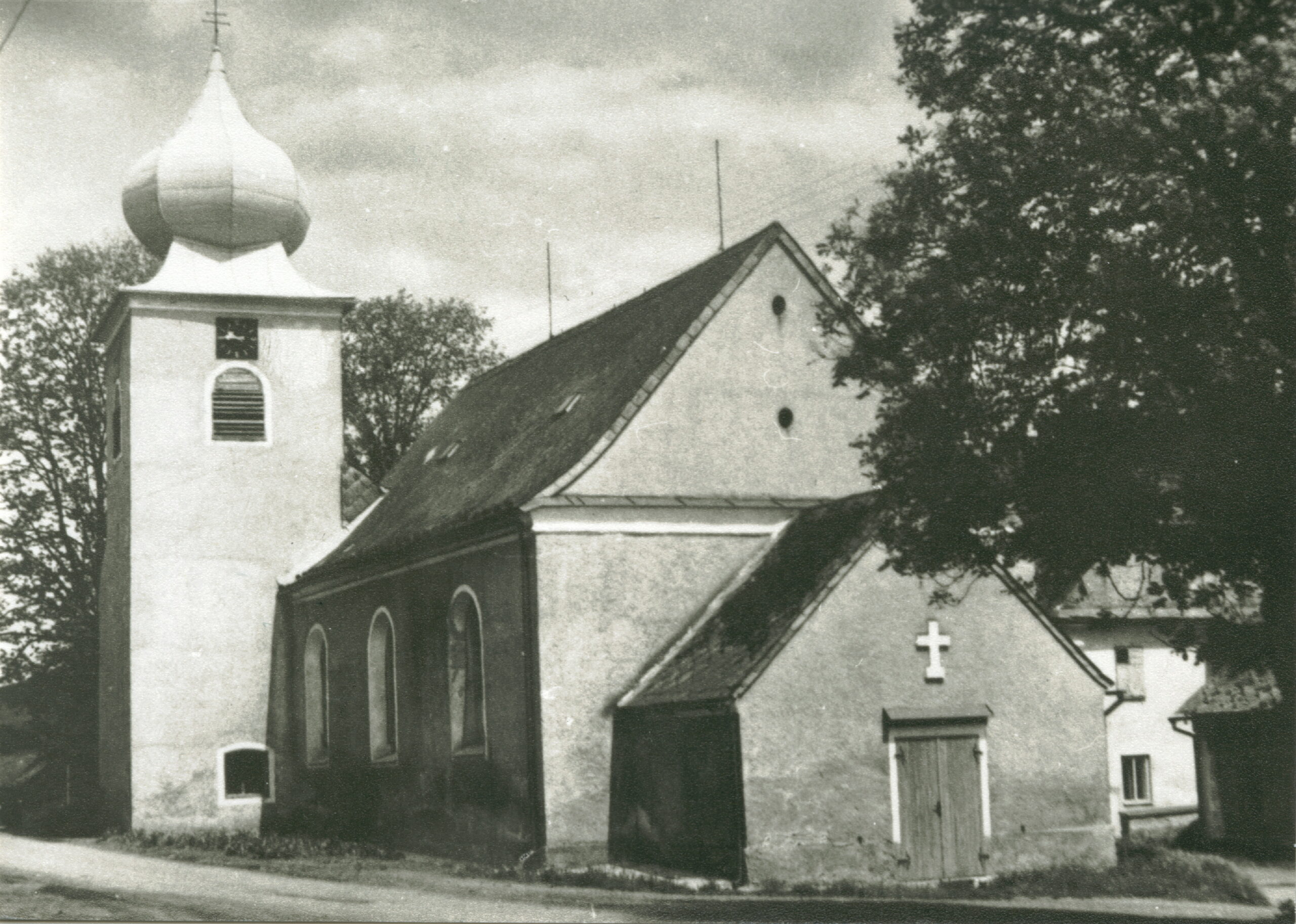 From Cz to US
From Cz to USSince the contract stated that it became effective from May 1, 1910, the Sisters began preparations for the journey. Of the volunteers, the following were chosen for the first mission in America: Sr. M. Qualberta Krivanec, present General Assistant and Prefect of Candidates; Sr. M. Caroline Babacek, a teacher of industrial arts who had eighteen years’ experience in various orphanages; Sr. M. Xavier Hava and Sr. M. Qualbertina Vanek, who had been studying the English language since 1907 and had passed state examinations in it; and Sr. M. Nothburga Komrska who was a housekeeper.
On April 20, 1910 His Excellency Bishop Joseph Anthony Hulka, Bishop of Budejovice made a special visit to the Motherhouse to bid the Sisters farewell. He gave them letters of recommendation to the Bishop of St. Louis and encouraged the Sisters that they were going into the “land of Our Heavenly Father and to their countrymen.”
The departure date was April 26, 1910. The Sisters gathered little dirt from the convent garden, the places frequented often, the graves of their parents, and the grottoes near the Motherhouse. This dirt they intended to mix with the soil in the garden at the Hessoun Orphanage.
Rev. Father Polanski accompanied the five Sisters to Bremen, Germany where they boarded the ship “Grosser Kurfurst” on Saturday, April 30, 1910 at 2 p.m. Although the weather was chilly, the journey was calm. The sisters, however, suffered from sea sickness, but were well on Sunday and the feast of the Ascension. They were grateful for daily Mass, celebrated by a Polish priest, Constantine Ferdyn, in a cabin. All the ship’s employees and passengers respected the Sisters, and the captain, as Episcopalian, inquired often about their health and needs.
Arrival in New York
On Monday, May 10, the Sisters saw the green shores of America and the city of New York. After docking, as the Sisters left the ship, the inspector examined only three of the twelve suitcases, dismissing the Sisters with “Pray for us sinners.” On May 11, after visiting the historic sites in New York, the Sisters left for St. Louis, a journey that took thirty hours. Rev. C. Bleha and two members of the orphanage committee met the Sisters at the depot and transported them to the German branch of School Sisters of Notre Dame in St. John Nepomucene parish. There the missionaries remained while the Hessoun Orphanage was being furnished for habitation.
On to Fenton, Missouri
On May 23, the Sisters left for Fenton where numerous fellow countrymen gathered to greet them. About twenty minutes distant from Fenton, Joseph Chmelic greeted the Sisters and pointed out the Orphanage where many women and girls waved American and Czechoslovakian flags. Their first visit was to the chapel where a small table served as the altar and a monogram “Mary” made from wreaths of flowers hung on the wall. The chapel, was, otherwise, entirely empty. Four months after their arrival, on September 17, the first two orphans, Agnes and Anna Kalbac, arrived. By 1913, twenty-two orphans were cared for at the orphanage.
Ignorance of the English language posed a problem, but the most severe trial was the lack of someone in whom to confide and from whom to receive advice and encouragement. Gradually the Sisters became accustomed to the new culture, and were comforted by the gifts received and the friendship of three women who became great benefactors with their counsel, work, and financial sacrifices.
From the Hessoun Orphanage in Fenton, Missouri, the Notre Dame Sisters eventually branched out into schools in Iowa and Nebraska.
Read about Mother Qualberta’s journey
Read about establishing the Motherhouse in Omaha
-
How Seven Oaks Farm became the Notre Dame Sisters Motherhouse and Academy
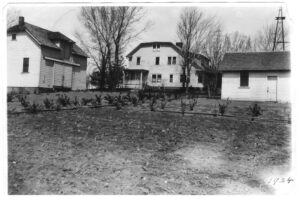 A Poultry Farm in Florence
A Poultry Farm in FlorenceOn March 3, 1855, the United States government granted many land grants to its officers and soldiers. The widow Mrs. Rhoda Rich obtained a tract of 160 acres in the Florence, Nebraska area as a pension after her deceased husband, Israel Rich, a captain in the War of 1812 with England.
Throughout sixty-five years, the property was owned by many people. The latest owner was Miss Lucy C. Harding who was married to L.C. Randall Polock of Omaha. She purchased the two quarters 185 and 186 on March 4, 1904. About five years later, Miss Harding built a residence on the property.
Father Flanagan and his Boy’s Home
She was advised to conduct a poultry farm in grand style, but it was not a profitable venture. The small farm did not produce enough grain to feed the poultry and the cattle on the land. It was necessary to buy feed which caused her to go into debt so deeply that she was forced to sell the property. For a long time, there was no buyer. Although the farm was priced at $9000, Miss Harding had a debt of $14,000. Finally a buyer was interested. Rev. Edward J. Flanagan needed a larger home for his boys who were, at the time, living in a rented house called the “German Home” on South 13th Street. However, Father Flanagan had no capital, so His Excellency Archbishop Jeremiah J. Harty bought the property in his name on September 10, 1919.
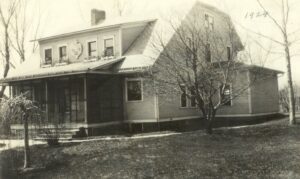 Mother Qualberta Steps IN
Mother Qualberta Steps INIn November, while visiting the Notre Dame Sisters who worked at Boys’ Home, Sr. M. Qualberta Krivanec learned that Father Flanagan planned to sell the ten acre farm in Florence and buy a larger one. At Father’s invitation, Sr. Qualberta and Sister Ludmila Panek, who worked at Boys’ Home, went to see the farm in Florence. Despite the unfavorable weather and the falling snow, the Sisters judged the “Seven Oaks Poultry Farm” to be a suitable location for a novitiate and possible motherhouse for the Sisters. The farm located on a high hill had enough ground for foliage and vegetables, several well-kept buildings, and a nice residence equipped with city water, electricity and a furnace. It’s accessibility to the street car and the proximity of a parish church were added benefits.
Sister Qualberta recalled the advice of Rev. Mother M. Cyrilla Marsik that a motherhouse is best situated on the outskirts of a large city so there is a sufficiency of fresh air, tranquility and home produce, yet close enough to the advantages of a city.
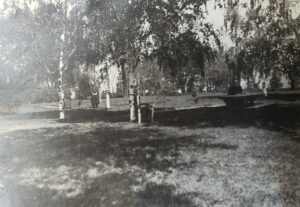 The price was the problem. Father Flanagan needed the money in order to buy the larger forty acre Outlook Farm west of Omaha. But Sister Qualberta needed permission from the Superior General in Europe for such a major transaction as purchasing property. Yet, trusting in God, she managed to scrape up $14,000 which Father Flanagan paid for the farm, and loaned it to him at 4% interest until she obtained permission from Rev. Mother Cyrilla to buy the farm. That consent arrived February 24, 1920. The Sisters took possession of the property in March.
The price was the problem. Father Flanagan needed the money in order to buy the larger forty acre Outlook Farm west of Omaha. But Sister Qualberta needed permission from the Superior General in Europe for such a major transaction as purchasing property. Yet, trusting in God, she managed to scrape up $14,000 which Father Flanagan paid for the farm, and loaned it to him at 4% interest until she obtained permission from Rev. Mother Cyrilla to buy the farm. That consent arrived February 24, 1920. The Sisters took possession of the property in March.Sisters roll up their sleeves and clear the land
The tenant, John Foral stayed on the farm until June 15, 1920 when Sister M. Agnes Vampola and Sr. M. Boleslava Tomecek arrived. Their task was to purchase the most necessary furniture, equipment and food. Three days later three more Sisters and three aspirants joined them. Before the newly-acquired home became the motherhouse for all the Sisters, much work had to be done on the buildings and the land. Most of the labor was done by the Sisters themselves. With the help of the boys from Boys’ Home, the Sisters tore down two chicken houses and two sheds. In their place they planted a vegetable garden. Hired laborers, volunteers and benefactors felled trees and planted numerous trees, grape vines and berry bushes.
 The first Holy Mass was celebrated on the feast of the Apostles St. Peter and St. Paul on June 29, 1920. The Sisters had borrowed a little altar and placed it in the dining room which served temporarily as a chapel. The parishes of Dodge, Howells, and Brainard donated church articles like vestments, missal and missal stand, cruets and altar cloths. In the fall of 1920 a chapel and several other rooms were added to the residence.
The first Holy Mass was celebrated on the feast of the Apostles St. Peter and St. Paul on June 29, 1920. The Sisters had borrowed a little altar and placed it in the dining room which served temporarily as a chapel. The parishes of Dodge, Howells, and Brainard donated church articles like vestments, missal and missal stand, cruets and altar cloths. In the fall of 1920 a chapel and several other rooms were added to the residence.By the end of 1920 the one-time Seven Oaks Poultry Farm served as the novitiate for training new members and as a centrally located motherhouse for the forty-eight Sisters who taught in eight elementary and high schools in lowa and Nebraska. From this humble beginning, the Notre Dame Sisters expanded their property to include the construction of Notre Dame Academy for the education of girls, and the Notre Dame Motherhouse for the governance of the Omaha Province.
– From Notre Dame Chronicle 1921, and compiled by Sr. Anita Rolenc, ND, Notre Dame Sisters archivist
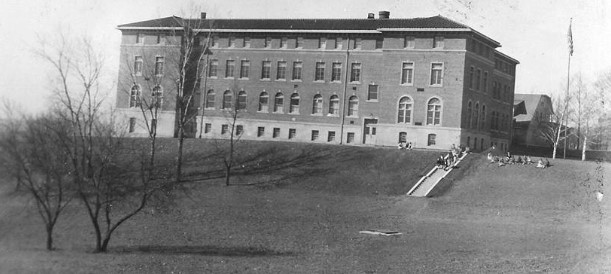
-
Mother Qualberta Krivanec and bringing the Notre Dame Sisters to America
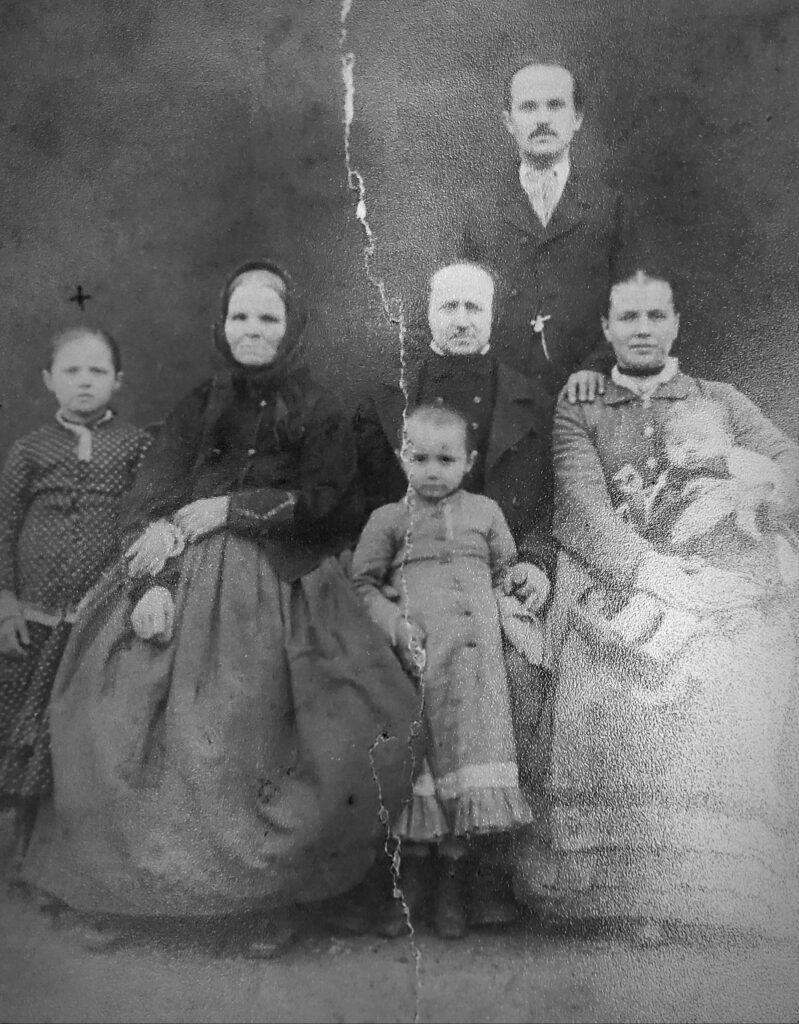
By Sr. Anita Rolenc, ND
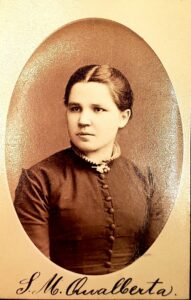 Antonia Krivanec was born on January 15, 1866 in Zabori, Bohemia. The youngest of six children of Vaclav and Marie, Antonia received her education in the village elementary school, while taking private German lessons from the parish priest. Antonia enjoyed the woods, meadows and lakes around her home and loved nature as a reflection of God’s love.
Antonia Krivanec was born on January 15, 1866 in Zabori, Bohemia. The youngest of six children of Vaclav and Marie, Antonia received her education in the village elementary school, while taking private German lessons from the parish priest. Antonia enjoyed the woods, meadows and lakes around her home and loved nature as a reflection of God’s love. Antonia asked for admission to the Notre Dame Sisters in Horazdovice, Czechoslovakia and became an aspirant on January 15, 1879. After her secondary education, Antonia attended St. Anne’s Teachers’ College in Prague.
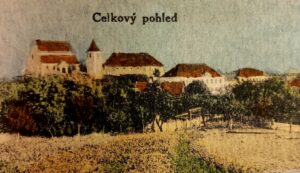
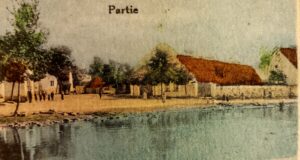
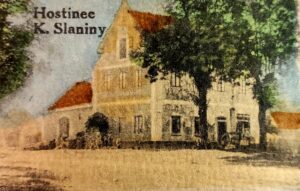
On August 13, 1885 she celebrated her religious reception and received the name Sister Mary John Qualberta. She promised God, “Willingly will I go wherever my superiors deem to send me-be it even to America.” While informed about the Holy Rule, the three religious vows and the practice of a spiritual life, Sr. Qualberta realized that her efforts at prayer, meditation and spiritual reading would develop her into a worthy and faithful worker for Christ. Her devotion to the Sacred Heart of Jesus was a source of strength and confidence. She learned also to rely on the Blessed Virgin Mary to help her in her ministry.
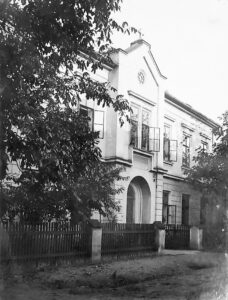
Sister’s first teaching assignment was sixth grade in St. Joseph’s Grammar School in Budejovice from 1885-1888. Appointed as principal of the two-room elementary school in Dolni Berlovice, she successfully held that position for seventeen years.
In 1905 Sister Qualberta was elected fourth assistant to the Mother General. Named prefect of candidates, she moved to the motherhouse in Horazdovice. Because of her love for the congregation and great respect for the observance of the rule, Sister Qualberta became a capable adviser to the Superior General Mother Cyrilla Marsik. Sr. Qualberta had a quality of solving problems with common sense that proved to be helpful to the General Council which received many requests from clergy in America for Sisters to come to the United States to serve the needs of the Czech immigrants.
It was Sr. Qualberta who urged the General Council to send Sisters to America, even though there were requests for Sisters in their homeland. Of the 754 Sisters in the Congregation, Sr. Qualberta was chosen to lead four others: Sr. Qualbertina Vanek, Sr. Nothburga Komrska, Sr. Xavier Hava, and Sr. Caroline Babacek who would assume the administration of the Fenton Orphanage in Fenton, Missouri. On April 26, 1910 the Sisters boarded the ship “Grosser Kurfurst” and landed in New York on May 10, 1910.
The Sisters arrived at the orphanage on May 23, to find no orphans and only five chairs, one table, a crucifix and a picture of the Holy Family for furnishings. The building was littered with tin cans and covered in weeds and cob webs. While disappointed, the Sisters tackled the work of cleaning the place. They set about to learn the English language. During the trials of adjusting to a new land, language, and culture, Sister Qualberta was the guiding force, encouraging the Sisters that this was God’s work for them.
An added discouragement was the lack of a chapel in the orphanage. The Sisters walked a mile, daily, to attend Mass. Not being able to converse in a common language with the priest or the orphanage board of trustees was another suffering.
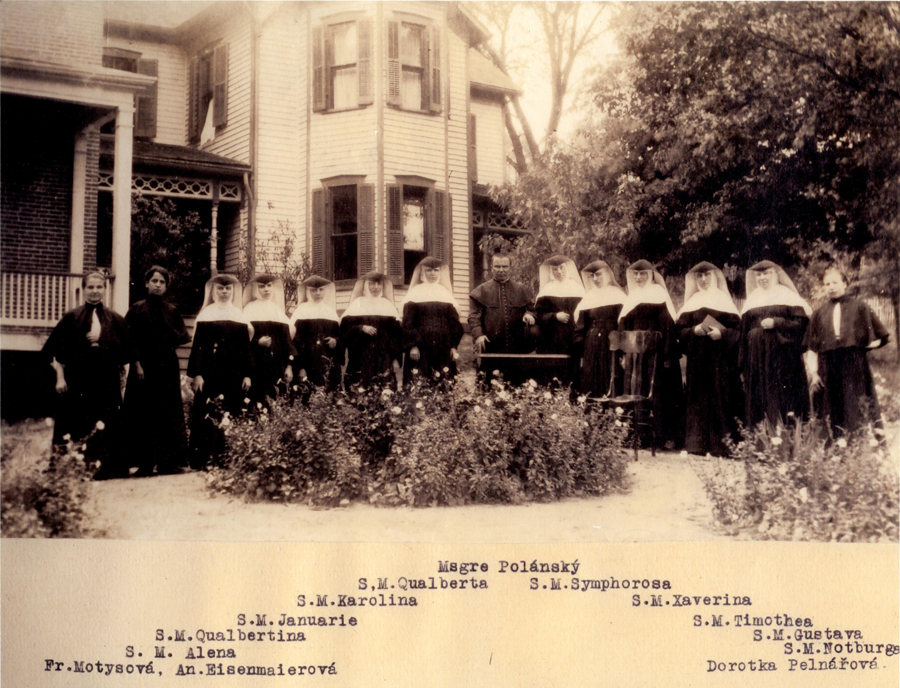
 Eventually two orphans arrived, then several more. The Sisters began catechism classes for the children from the Czech parishes. When requests came for Sisters to teach in a new school in Dodge, Nebraska, Sister Qualberta applied to the motherhouse in Europe for more Sisters. Five Sisters and three candidates arrived in America in December 1911.
Eventually two orphans arrived, then several more. The Sisters began catechism classes for the children from the Czech parishes. When requests came for Sisters to teach in a new school in Dodge, Nebraska, Sister Qualberta applied to the motherhouse in Europe for more Sisters. Five Sisters and three candidates arrived in America in December 1911. Sister Qualberta was named Commissary General in America, an appointment that gave her powers and duties over the new foundation in the United States. As commissary, her chief responsibility was to establish a permanent novitiate and motherhouse in the new world. At first the novitiate was in Fenton, but later was permanently located in Florence, near Omaha, Nebraska.
Mother Qualberta was a mother to the Sisters. She took a personal interest in each one, recognizing the talents and skills and differences in each. She was kind and patient with those in need of correction. Often she spoke of devotion to the Sacred Heart of Jesus. A woman of faith, she trusted in God’s help in all situations.
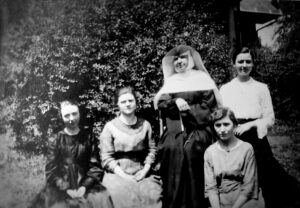 By 1920 the community numbered fifty members working in ten institutions. The motherhouse was established in Nebraska. Mother Qualberta had guided the congregaton to August 11, 1929 when she officially turned over the government to Sr. M. Gustava Melmer. In her retirement, Mother Qualberta researched the history of the Congregation; wrote numerous letters, magazine articles, and summaries of spiritual books; and produced pedagogical materials for students and teachers.
By 1920 the community numbered fifty members working in ten institutions. The motherhouse was established in Nebraska. Mother Qualberta had guided the congregaton to August 11, 1929 when she officially turned over the government to Sr. M. Gustava Melmer. In her retirement, Mother Qualberta researched the history of the Congregation; wrote numerous letters, magazine articles, and summaries of spiritual books; and produced pedagogical materials for students and teachers. Mother Qualberta Krivanec died quietly on First Friday, March 3, 1939.
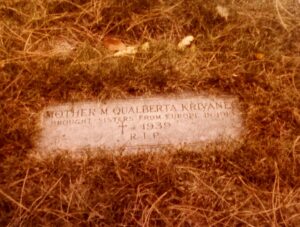
Gravestone in Omaha, NE, USA
-
Rev. Gabriel Schneider

Rev. Gabriel Schneider’s birthplace. The pillows in the window mark where he was born
The immediate founder of the Czech branch of the Poor School Sisters de Notre Dame, Gabriel Schneider, was born in Krems, Bohemia on March 21, 1812. His pious parents, Matthew and Rose nee Zimmerman, were of the laboring class. Gabriel attended the village school from the sixth to his twelfth year, after which he was “exchanged” for one year into a German miller’s family to learn the German language. His elementary education complete, it was evident that Gabriel was too weak physically to engage in any trade. Gabriel begged to continue his studies. He continued higher studies at Bohemian Budweis, and later pursued philosophical studies. On July 25, 1837 he was ordained a priest.
His first assignment was as assistant to a blind pastor at Klenci, where he labored in the pulpit and the confessional, and spread devotion to his adopted patron, St. John Nepomucene. A year later he was appointed to Mrakov where he organized the women, boys and girls into groups for guidance, giving them many salutary maxims for their spiritual growth.
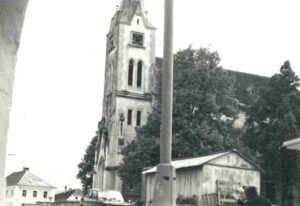
Church where Rev Gabriel Schneider was baptised
Father Schneider periodically went to a distant Franciscan monastery for spiritual direction, but because of the distance, sought the direction of the zealous pastor of Hirschau. In 1842, Father Gabriel was transferred to Hirschau which was originally just a chapel. Through the benevolence of Andrew Schmidpetr, the chapel was enlarged into a parish church. Here, Father organized a Girls’ Sodality because he recognized the need of a well-trained womanhood. His observance of the conduct of the girls trained by the Sisters of Notre Dame in Munich as compared to the influence of secular training received in Prague convinced him of the need of bringing into Hirschau an institution for the education of girls.
During a serious illness, Father Schneider had a dream in which the Blessed Mother led girls to him. Then the pastor’s sister asked his advice concerning her wealth. Already Margaret Grall and Barbara Seidl knew of his project and promised financial aid and volunteered to work for him. With these promises and financial aid, Father started to build a parochial convent school in Hirschau. Both women were sent to Gratz, Stiermark to be trained by the School Sisters of St. Francis. Father Schneider was informed that the two girls would be candidates for a year and in the novitiate another year. When they returned to Hirschau in two years, an experienced professed Sister would be their superior for three years.

Meanwhile Father continued building, despite difficulties, misunderstandings, and lack of finances. In December 1847 he sent two more candidates, Marie Grall and Teresa Baumann to the Franciscan convent for training. On May 15, 1847, Margaret Grall and Barbara Seidl received the religious habit and the names Johanna Nepomucene and Magdalene, respectively. In 1848, Sr. M. Magdalene Seidl and four Hirschau candidates settled in the unfinished building and in October the school officially opened. The building was completed in 1849. Father petitioned the Notre Dame Sisters of Munich to take over the school. Mother Teresa Gerhardinger not only promised to give him the required number of Sisters but also requested that the candidates be sent to Munich for further training. This delighted Father, but then, Mother Teresa informed him that she could not send the Sisters to Hirschau.
It was Father Schneider’s intention that the Bavarian Notre Dame Sisters would have the parish school in Hirschau as their mission. The constant struggle to obtain Sisters for his parish, conflict between Rome and the Bavarian branch of Sisters, and disputes over the reception of novices for profession and candidates for reception led Father to realize that there was no solution. The Bishop of Budweis, the Archbishop of Munich, and the Titular Bishop of Olomouc, counseled Father Schneider to found an order of Notre Dame Sisters in Hirschau. On August 30, 1852, Father Schneider returned from Munich with the nucleus of the future Czech congregation of the Poor School Sisters de Notre Dame. The first profession of two novices and the reception of six candidates became a reality on August 15, 1853. Sr. M. Remigia was appointed superior and Sr. M. Armella novice mistress. In one year, Hirschau became too small. In 1854 Father bought a deserted monastery in Horazdovice. On October 9, 1854 the Sisters moved in. Twenty days later, they had the first reception and profession in the new General Motherhouse. Six novices were professed and six candidates invested. The first General Superior, Sr. M. Teresa Franz, was elected.
Father Schneider was very conscious of the importance of access to educational institutions of higher learning, so in 1857 he established a house in Prague which he converted into a convent and normal school. This became St. Ann’s College.
In 1860, when the Archbishop of Kalocsa, Hungary begged for School Sisters for his diocese, he sent five Hungarian girls to Horazdovice as candidates. When these girls were invested, Mother Teresa and two other Sisters accompanied them to Kalocsa. Mother Teresa noted the huge, completely equipped building that was available to the Sisters. She tried to persuade Father Schneider to make the General Motherhouse in Hungary. When he refused, she remained in Hungary when the other Sisters returned to Horazdovice.

Final burial place for Rev. Gabriel Schneider
Father Schneider acted as the Superior General, until 1864 when he arranged for a General Chapter. One of the original six postulants who received the habit at Hirschau in 1853, Sr. M. Jane Nepomucene, was elected Superior General.
With the young congregation completely organized, Father Schneider moved to St. Ann’s in Prague and left the worries of the congregation in the capable hands of Mother M. Jane.
All of Father Schneider’s life and activities were accompanied by chronic physical ailments. He became quite ill in December 1866. He lingered, suffering more and more until he quietly died on February 15, 1867. Thus passed to his eternal reward a priest, a Father, a Mother, a founder, but most of all a SAINT, whose sanctity lies hidden in the spirit he bequeathed to the Congregation dedicated to our Blessed Lady.
Source: “Rev. Gabriel Schneider” by Sr. Barbara Markey, ND
-
History of the Chapel of the Assumption of the Blessed Virgin Mary
The chapel is special to me because it was in the presence of Jesus in the tabernacle that I was received as a novice into the Notre Dame congregation, pronounced my first and final vows, and celebrated my 25th, 50th, and 60th jubilee of vows. It is my favorite place to pray, to spend time with Jesus, sometimes walking around, sometimes playing the organ, sometimes just sitting in silence and thought. Now as sacristan, I feel privileged to provide an pleasant atmosphere conducive to prayer for others. Below is a brief history of how this chapel came to be. ~ Sr. Anita Rolenc, ND, community archivist
The first dollar
In August of 1939, a donation of $1 from a woman in northeastern lowa who remarked that it be used for the building of a chapel, was the beginning of a fund for a future chapel. Donations from Alumnae of Notre Dame Academy, from clergy, friends, and family members; from Bingo and Card parties held by Friends of Notre Dame, and other sources continued to be sent to the Sisters.
World war Halts Progress
In March of 1941, the Notre Dame Provincial Officers concluded that the construction of a new chapel could begin soon. However, in mentioning this plan to Rev. Bishop H. Ryan, he advised them that it was not the right time to consider such a project. With the outbreak of World War II in December, both laborers and materials were unavailable.
On April 18, 1945, the feast of the patronage of St. Joseph, the Provincial officers had their first meeting with Carl Stangel, the architect, about plans for the new chapel and a west convent wing. At the corporation meeting on June 5, it was suggested that the Sisters offer Holy Communion and Holy Mass in honor of St. Joseph on the first Wednesday of each month to beg God’s blessing on the project.
Breaking ground
Six months after the June 1949 Corporation meeting, Mr. Stangel had the plans for the project prepared and in January 1950 the submitted bids were opened. In mid-January, Rev. Mother Alphonsa Suda asked His Excellency Archbishop G.T. Bergan for his assistance in obtaining the necessary permission for borrowing the large sum of money needed. The Sisters began making negotiations for a loan of $300,000 with the advice of Walter V. Raynor. With his name inserted in the petition submitted to the ecclesiastical authorities of the Holy See, it was sent to the Apostolic Delegate in Washington, D.C. on February 14, 1950. By the 24th of that month, the petition was granted. Further permission was sought in April from the Superior General, Rev. Mother M. Zbislava Krump for approval of the cost for the building project.
While all this was transpiring, the blessing and breaking of the ground was held on Sunday, February 26, 1950 with Archbishop Bergan officiating. Along with nine Knights of Columbus as a guard of honor were approximately 100 people, including the architect and the general contractor E.E. Gilmore. Of note, the shovel used for the breaking of the soil was the same one used on August 15, 1925 for the Academy.
Construction
The Miller Excavating Company began the excavation for the building on March 20, the day on which the feast of St. Joseph was celebrated that year. Since Rev. Mother Alphonsa had given St. Joseph the chief care for the entire project, it was appropriate. The job was completed on March 31.
By March 27, the Gilmore Company began work on the central heating plant. A month later the company poured the foundation for the chapel. On May 10, the Miller Excavating Company used heavy machinery with a giant elevating crane to erect the high steel skeleton from the lower level to the ceiling of the chapel. The floor in the nave of the chapel was poured on June 13.
In early September, 1950, the masons worked above the chapel windows. The walls of the chapel were finished on September 29. The building of the altars in the new chapel began the early part of June, 1951, and in mid-June the carpenters worked on the acoustical ceiling in the sanctuary. Installation of the electrical fixtures, the painting and finishing touches were prolonged until the end of July.
Blessing the project
The spacious chapel was blessed by Archbishop Gerald Bergan on August 13, 1951. In his homily, the Archbishop congratulated the entire congregation of Notre Dame Sisters on the successful completion of the beautiful sanctuary of Mary. A formal dedication of the chapel in honor of the Assumption of Mary was held at a later date.
According to the estimate the architects made on February 13, 1951, the cost of the new building was $459,302.71, not including the interior furnishings.
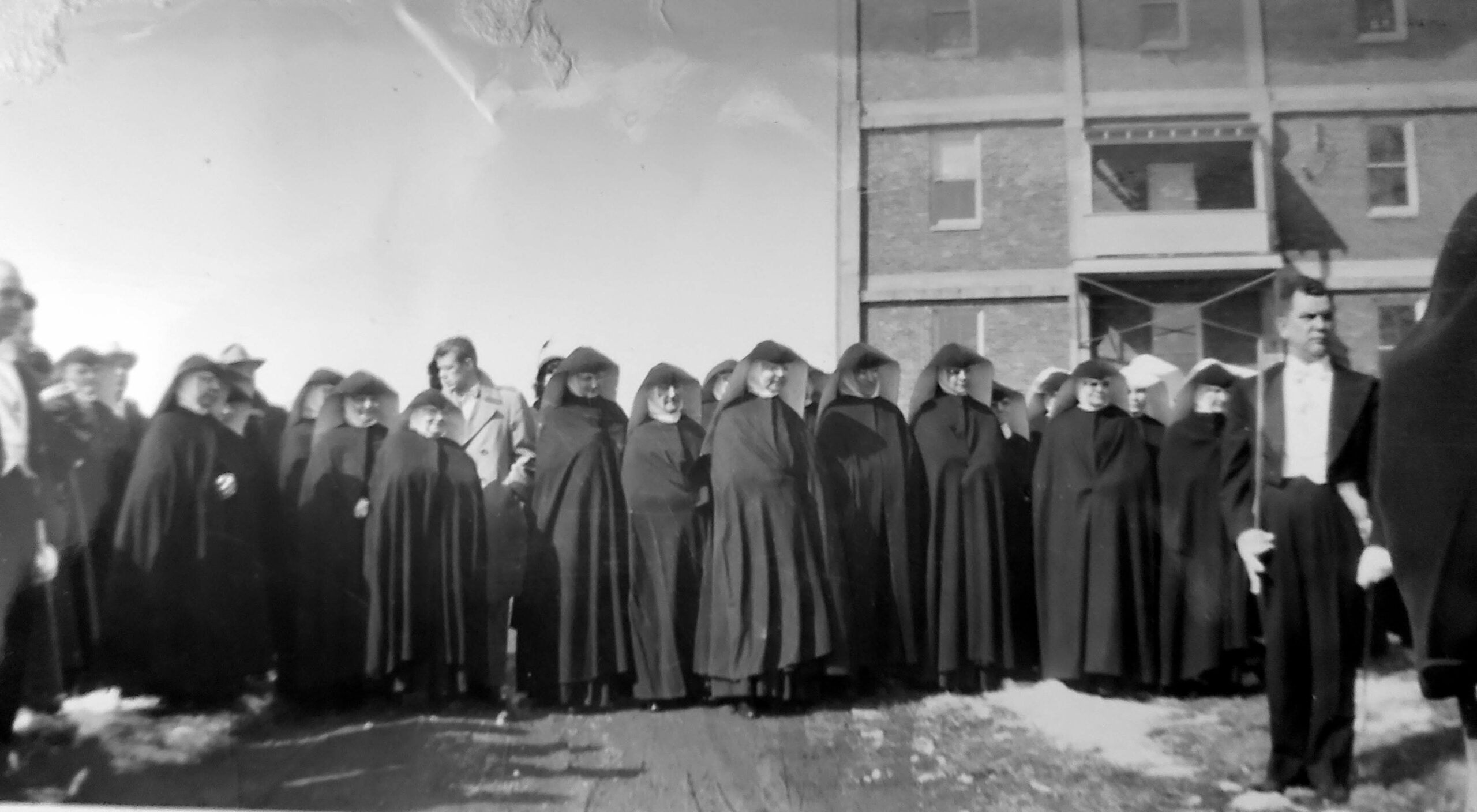

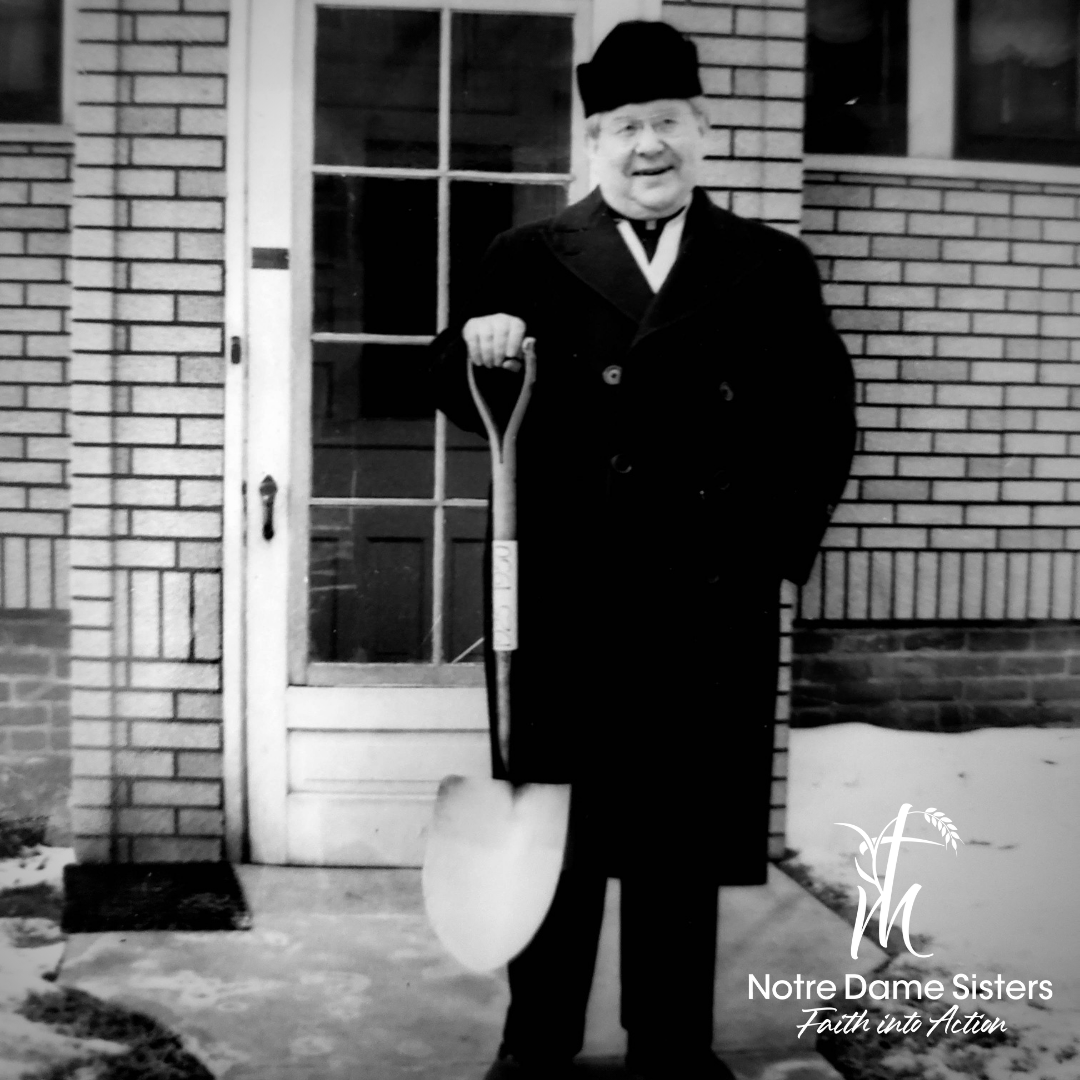



See more photos of this project on our Facebook album here.
-
No strangers to tough times: read an account of Notre Dame Sisters in a German concentration camps
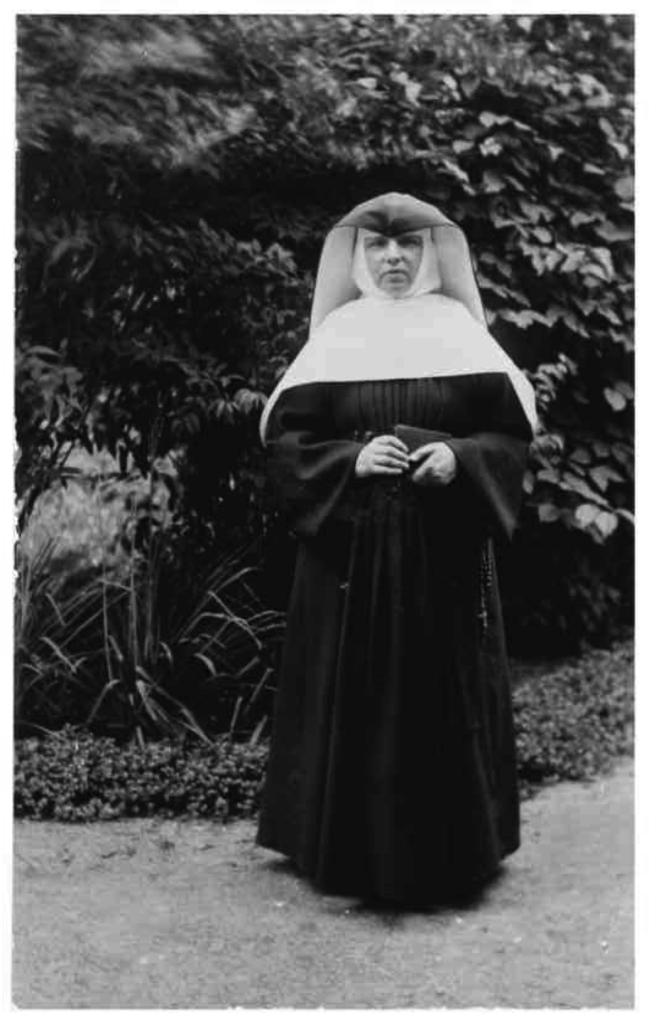 A letter written by Rev. Mother M. Fabiola was sent by a soldier to his mother in the Holy Name Parish in Omaha. She forwarded it to the Notre Dame Sisters.
A letter written by Rev. Mother M. Fabiola was sent by a soldier to his mother in the Holy Name Parish in Omaha. She forwarded it to the Notre Dame Sisters.“The hardest trial of the past years was that I was absent from the motherhouse (Horazdovice in Czechoslovakia). I was for 17 months in German captivity in concentration camps at Pankratz, in Prague, in Terezin, and finally at Ravensbruck in Meklenburg in the women’s concentration camp for the entire year. Sr. M. Epiphanie, the provincial superior from Marienbad (Germany), was also there as were Sr. M. Ernestine and Sr. M. Susanna. They all died there. God preserved me miraculously and saved me only because of the many prayers of the Sisters. I returned to the motherhouse exhausted, in a pitiable condition, and yet comparatively healthy.”
About the Sisters who died in the concentration camps, Rev. Mother wrote, “I did not meet dear Sr. M. Epiphanie again in the concentration camp; she died a month before my arrival. Dear Sr. M. Ernestine found me immediately and we could meet daily because outside working hours it was permitted to walk among the cells. We prayed together our religious prayers, the rosary, and on Sunday the prayers of the Mass which was never said there. Sr. M. Ernestine was healthy all the time until in January 1945 when she caught cold. She contracted typhus and succumbed on February 4 of that year due to a weak heart. She was in an isolated block to which there was no admittance. I was told she died peacefully and quietly as she had lived. Sr. M. Susanna arrived shortly before Christmas 1944 from Terezin and was already then suffering from typhus of which there was a terrible epidemic because her cell block was isolated. I talked to her just once and she was very sick then. She was just skin and bones. Then she was taken to the hospital where she is said to have died peacefully on December 31, 1944.”
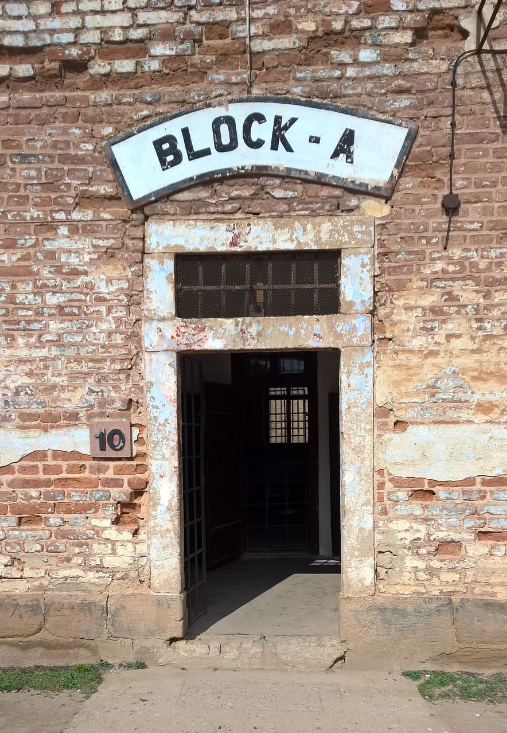
Terazin Concentration camp cell block
On October 1, 1945 came further news from Horazdovice: “Only in our German province the Sisters had no religious reception because they were not permitted. And this is the fault for which I was in prison from December 10, 1943 until April 27, 1945. In 1943 there were three German postulants here. Someone reported it to the Gestapo who came right before the reception. The German novices and postulants were commanded to go to work for the state outside the convent. They then took the superior of Bystrice, Sr. M. Ernestine, and the Provincial Superior from Marianbad into imprisonment and finally even me. Both these two paid for it with their lives. They died in the women’s concentration camp in Ravensbruck near Furstenberg in Meklenburg.”
In describing the last days of imprisonment and the return journey home, Mother wrote, “We left the concentration camp on April 28, 1945 and in company of the guards we walked six days and five nights with bundles on our backs through Meklenburg, until May 3, 1945 when we were declared free and could go home. . . . I joined a group which numbered 300 women and it was decided that we would go by boat across the river to Prague. . . We sailed on the Elbe for several days . . .when the English (soldiers) claimed that sailing on the Elbe was not safe because of the dangerous mines. Then the Russian commandos took us in charge. They transported us to the nearest station and we went by train across Berlin, Frankfurt and Odrou, across Poland into Posen, then to Prague.”
From the Archives submitted by Sr. Anita Rolenc
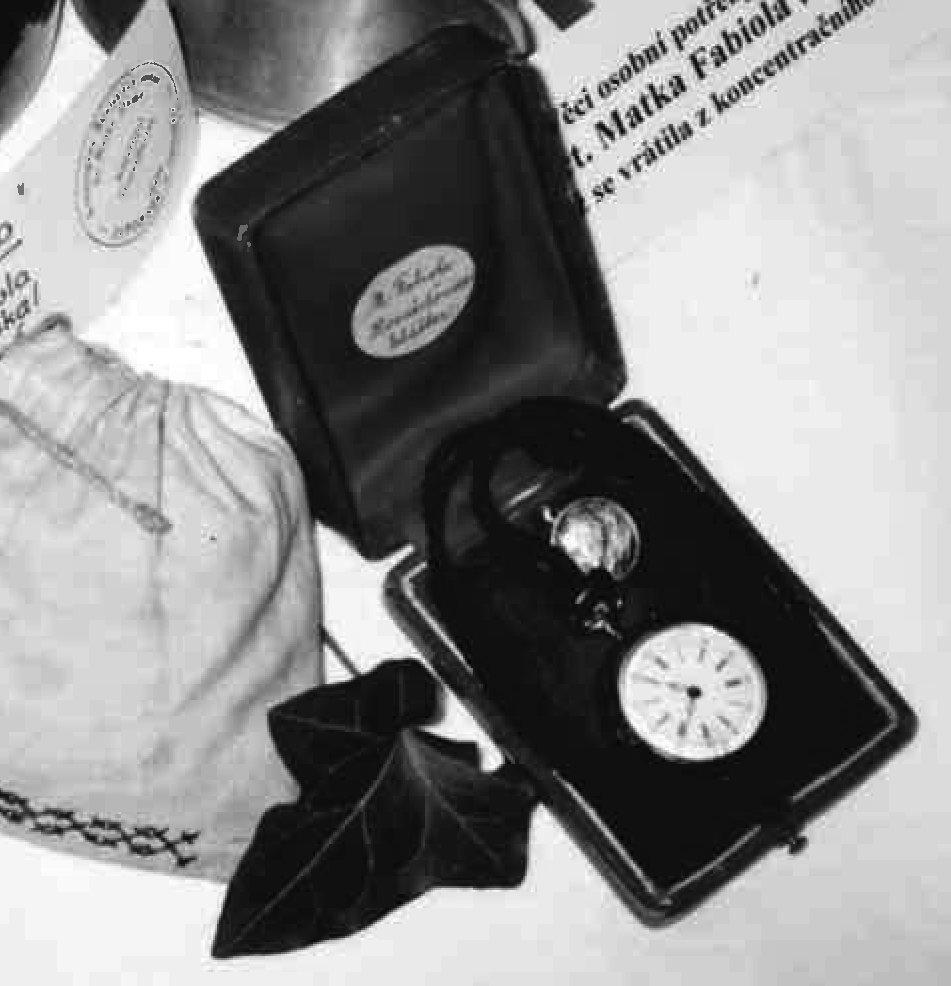
Watch held by Rev. Mother M. Fabiola from 1943-45 while living in concentration camps
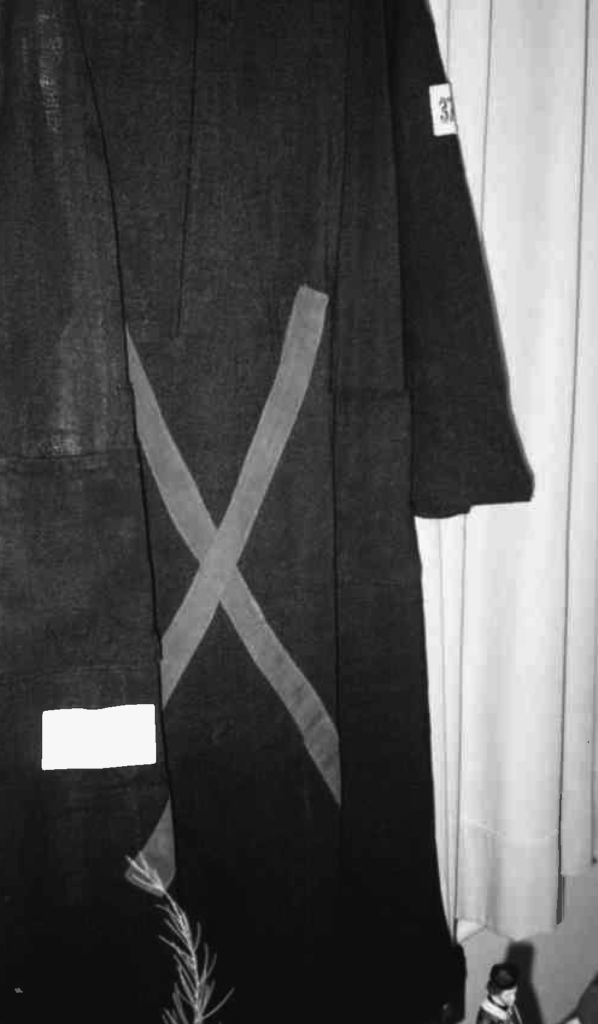
Dress worn by Rev. Mother M. Fabiola from 1943-45 while living in concentration camps. She wore a purple cross stitched onto her garment.
